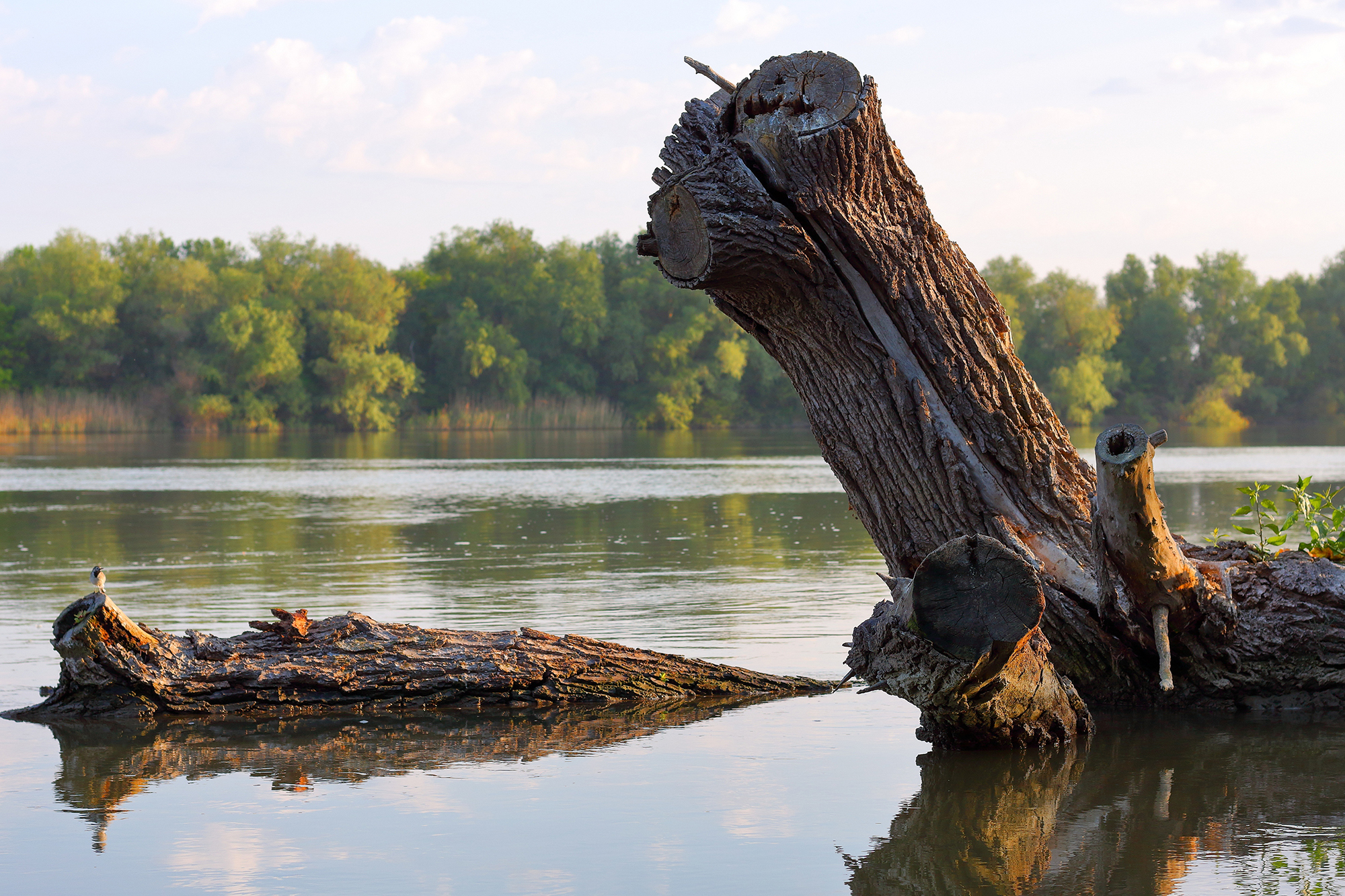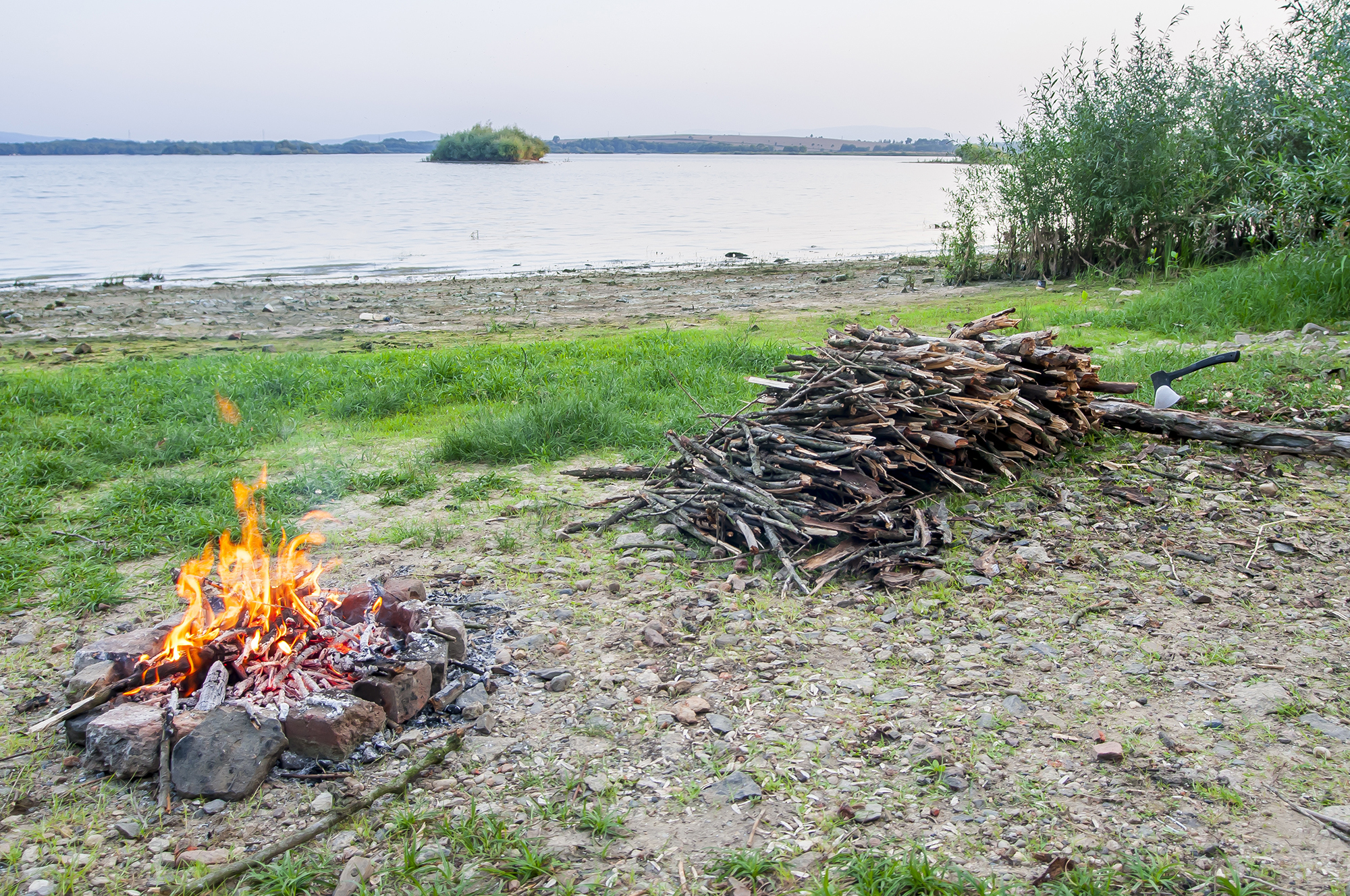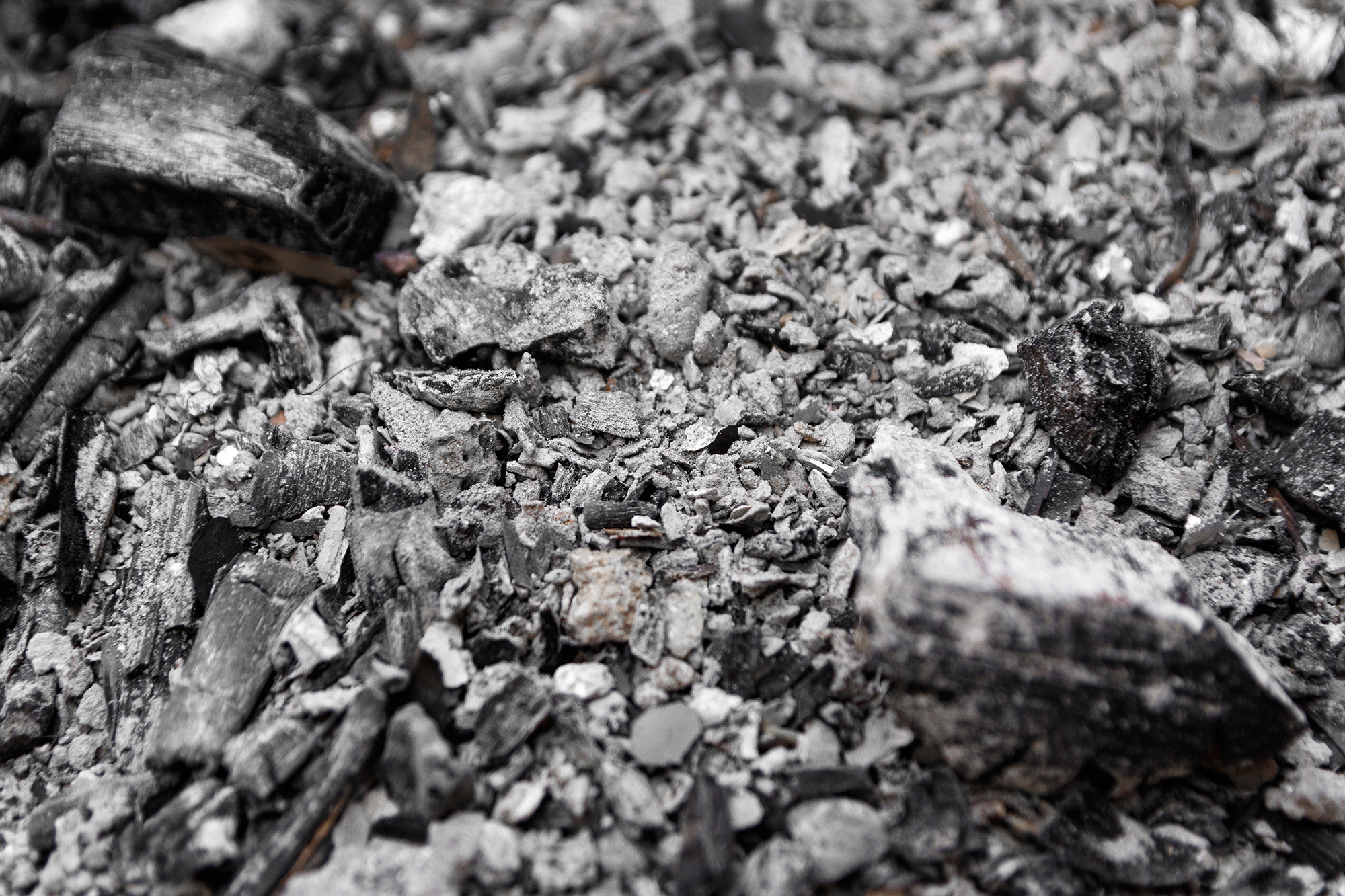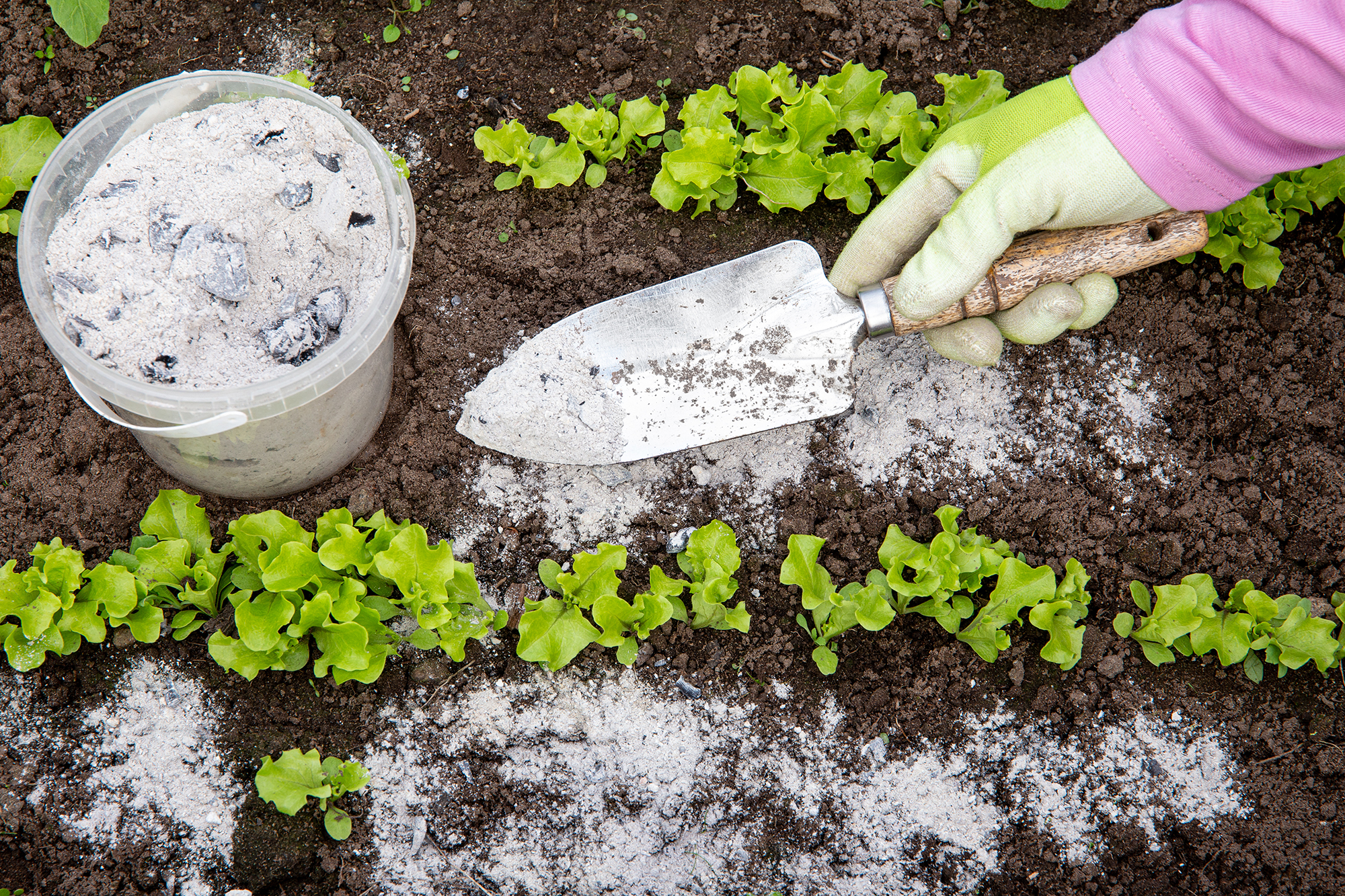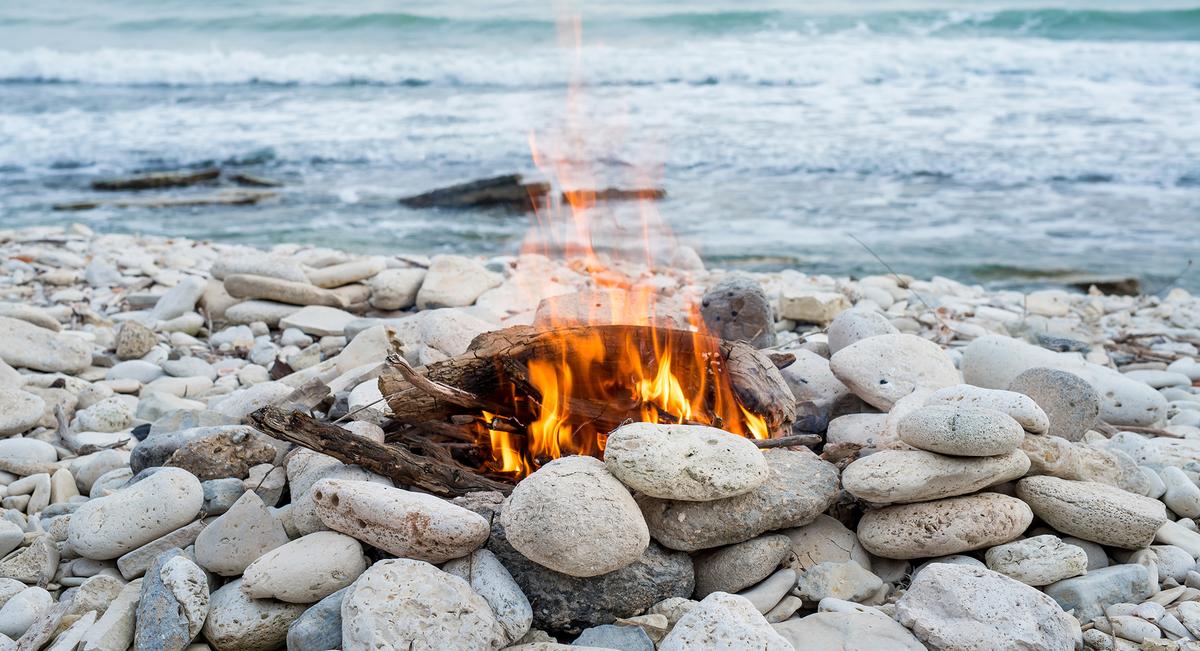
Image credit: ©diyanadimitrova. Stock.adobe.com
People love an outdoor wood fire. They are a great way to keep warm, dispose of unwanted brush, cook food, and create ambience while enjoying outdoor activities.
For many Minnesotans, myself included, a wood fire is a family tradition.
A friend named Jean Melin, who edits the Wabana Chain of Lakes newsletter, asked me whether wood fires pose problems around lakes. She told me that my father, who lived for many years near Lake Wabana, would tell her he was quite concerned about keeping wood-fire ashes away from water.
My father was right to be concerned.
But it’s not the fire that’s a problem.
It’s the ash that’s left behind.
Wood is Good
Wood can be important physical habitat structures for fish. It can act as a spawning surface or substrate for many species, protection from predators, and a source of food. When there is wood in water, it can provide a substrate for colonization of algae and fungi and bacteria that are food sources for the invertebrates that fish feed upon.
Wood also has important physical effects for lakes and streams. Large logs and trees can create different water channels such as pools, undercut banks, and areas of scouring. These channels can change subsurface flow in streams that affect fish habitat and the flow of nutrients throughout the food web. Wood is also critical to reducing erosion especially during floods. Woody debris can interrupt the flow of runoff into water bodies and thereby reduce pollutants from entering the water. When runoff is slowed, shoreline vegetation (if it is present) has a chance to take up pollutants (e.g., nitrogen from fertilizer) so it does not go directly into a lake or stream.
Submerged wood can also sequester carbon, which helps slow climate warming.1-3
Woody material in lakes is called “coarse woody debris” and consists of logs, branched logs, snags (e.g., logs or branches sticking out of the water), coarse stumps and roots, fresh wood, and decayed wood.2
Wood is good for water. It’s good for fish and other animals and plants. It’s also especially good for people and their lakeside or shoreline property. But studies show that when landowners develop shoreland, they remove an average of 90% of the wood from along their shores and underwater.1 This is one of the many ways shoreland development can harm lakes. It is far better for lakes to leave wood in the water and a broad strip of natural vegetation along the shore.
Image credit: ©Emeryk_3_Drozdowski. Stock.adobe.com.
Ash is Bad
If wood is good for lakes, why would burnt wood be a problem? Good question.
When wood burns it goes through drastic chemical changes, which may seem obvious. But, wait. When wood ash combines with water it forms lye. Wood-ash lye is a little less caustic than the commercial lye used in drain and oven cleaners, but still not what you want in your water. Lye also has a softer side, but I’ll get to that later.
Wood is made of lignin and various types of celluloses that are made mostly of carbon, hydrogen, and oxygen.5 Burning wood releases the energy stored in those molecules as heat and carbon dioxide, water, and other materials6 that are released into the atmosphere. Burning takes away a large fraction of the carbon in wood leaving behind a lot of the other chemical elements. Wood is made up of 2,000-times more carbon than any of the many trace elements it contains.7 Trace elements can include many metals and other elements that are not dangerous when in low concentrations but can be more significant when most of the carbon, oxygen, hydrogen, and nitrogen are burned away and only ash remains.
Image credit: ©rahwik. Stock.adobe.com
We Have An Ash Problem
Because wood is seen as a renewable energy source and people burn wood for heating and power generation, wood-ash disposal is an important problem. According to the Minnesota Department of Natural Resources, a cord of seasoned wood (defined as stacked wood 4 feet x 4 feet x 8 feet; 3.6 m3) weighs an average of 4,940 pounds (2,241 kg). Considering wood, bark, twigs and some foliage, ash is an average of about 1.8% of this weight if it is completely combusted at high temperature.5,8 Burning a cord of wood generates 90 pounds of ash (40 kg). This ash is a mixture of different chemicals and elements that are much more noxious, mobile, and water-soluble than the wood that it came from.9-12
Chemical Composition of Wood Ash
Many scientists are studying the composition of wood ash. I have compiled some of the compositions into averages in the table below. Some particularly concerning elements are noted in red. Because water quality is greatly harmed by excess phosphorus, it deserves special attention. Incidentally, another nutrient implicated in eutrophication, nitrogen, is very low in ash because it is driven off to the atmosphere as various gases,13 some of which can cause acid rain (see Table 1 below).
Phosphorus. Phosphorus, though, is present in wood ash at about 1.2% of the whole weight of ash. This means that the burning of a full cord of wood can result in about 1.6 pounds of elemental phosphorus (0.72 kg) becoming concentrated in the ash. For reference, this is more than the amount of phosphorus (an important component of all foods) excreted into raw sewage each year by an adult.14 This concentration is about six times the legal upper limit for phosphorus in lawn fertilizer in Minnesota which is 0.67% phosphate (0.22% phosphorus). We should be as careful in disposing of our wood ash as we are in disposing of our fertilizer and sewage. Proper disposal of ash to keep it from being washed into lakes and streams is good stewardship.
pH. There are several other chemical problems with wood ash that also suggest the need for careful disposal and management. First, addition of wood ash to water can raise the pH of the water to around a pH of 12 (normal pH for water in Minnesota is between a pH of 7 and a pH of 8 with brown waters a little lower). Plants and animals can usually only live and thrive within a narrow range of pH which is why acid rain is a problem for lakes.15
Calcium. Calcium is also very highly concentrated in wood ash at around 26% of dry weight. This suggests that wood ash could increase the alkalinity or buffering capacity of lakes; although calcium is likely to be deposited in sediments at such a high (basic) pH.
Potassium. Potassium is very concentrated in wood ash but the influence of high potassium on aquatic ecosystems is unknown. The word “potassium” is the Latinized form of the word “potash,” which in older Dutch translates to literally “pot ashes.” The chemical symbol for potassium is “K” which comes from the Latin “kalium,” which comes from the Arabic “al-qaliy” (alkalai) that means burnt ashes.
Heavy metals. Wood ash contains a surprising array of heavy metals (e.g., zinc, nickel, copper, lead, chromium, arsenic, cadmium and mercury, among others). In high enough concentrations, these can cause problems for people and aquatic and terrestrial environments.
Image credit: ©FotoHelin. Stock.adobe.com.
How to Manage Ash
The most important aspect of managing wood ash and charcoal ash is to keep it away from water. Ashes from campfires and bonfires should be moved away from water when they are cool enough to do so safely. Ashes can enhance forest growth if carefully applied in a way that will keep it from washing into waterways.16 Ash can be added to gardens but only if the existing soil pH is quite acidic because soils with high pH can make nutrients inaccessible to garden plants. Ash can be applied to agricultural fields if conditions are monitored carefully.
We may have forgotten how rich a resource wood ashes are. In 1894 a charming book was published called, “Wood Ashes and their Use: a Practical Treatise on the Value and Use of Wood Ashes”17 which can be downloaded free of charge. A web search on “uses for wood ashes” will turn up dozens of good uses ranging from shining silverware to repelling garden pests. Just keep ashes away from water. If you move completely cooled wood ashes to a forest, make sure to spread them out to prevent the concentration of metals and high pH. Spread them on flat ground to prevent them from washing away. My wife, Marcia, suggests covering completely cooled ashes with leaves or duff to keep them from washing away and from spoiling the beauty of the forest.
Fire Safety
There are lots of important reasons to minimize use of wood-fire ash in recreational areas other than the preservation of good water quality. Every summer, there is a spike in injuries and deaths from recreational fires.18 Climate change is expected to bring our region a five-fold greater risk of wildfires by mid-century.19 These fires are expected to increase deforestation, property damage, and degrade water quality.20 The majority of wildfires and wildfire damage in our region are human caused.21 Although fires bigger than three feet across or three feet high require a permit in Minnesota and other states, small campfires for cooking or ceremonial purposes do not require a permit, according to the Minnesota Department of Natural Resources (MNDNR). Before burning, you should always check the MNDNR website because under dry conditions no fires, including campfires, are permitted. Always check fire regulations before setting a campfire or bonfire on public land as rules change with weather and ground conditions. Even though campfires may be permitted in state parks when conditions are safe, firewood collection is prohibited, and all fires in state parks and forests need to follow state guidelines.
Takeaway Your Ashes
Enjoying a fire near water can be an immensely enjoyable part of recreational experiences. It is important to protect water resources for ourselves and for future generations by making sure ashes are cold and disposing of them properly where they can’t wash into waterways.
The solution is easy. If we all pick up and properly dispose of wood-fire ash, we can help keep Minnesota’s lakeshore environments beautiful and healthy.
TABLE 1. Elemental Materials in Wood Ash
The table shows the average amounts of various materials in wood ash. This table was compiled by John A. Downing from an online database and other published sources. 22-24 Elements of particular concern are asterisked.
| Element | Symbol | Average | Percent |
|---|---|---|---|
| Calcium | Ca | 260,485 | 26.05% |
| Potassium | K | 59,101 | 5.91% |
|
Silicon |
Si | 51,090 | 5.11% |
| Magnesium | Mg | 46,307 | 4.63% |
| Aluminum | Al | 13,964 | 1.40% |
| *Phosphorus | P | 11,938 | 1.19% |
| Iron | Fe | 11,608 | 1.16% |
| Sulfur | S | 9,412 | 0.94% |
| Sodium | Na | 5,513 | 0.56% |
| Titanium | Ti | 1,187 | 0.19% |
| Nitrogen | N | 1,739 | 0.17% |
| Barium | Ba | 1,659 | 0.17% |
| *Zinc | Zn | 1,457 | 0.15% |
| *Nickel | Ni | 831 | 0.08% |
| Chlorine | Cl | 690 | 0.07% |
| Boron | B | 392 | 0.04% |
| *Copper | Cu | 300 | 0.03% |
| *Lead | Pb | 125 | 0.01% |
| Antimony | Ab | 108 | 0.01% |
| *Chromium | Cr | 85 | 0.01% |
| Vanadium | V | 46 | <0.01% |
Bibliography
- Christensen, D. L., Herwig, B. R., Schindler, D. E. & Carpenter, S. R. Impacts of Lakeshore Residential Development on Coarse Woody Debris in North Temperate Lakes. Ecological Applications 6, 1143-1149, doi:https://doi.org/10.2307/2269598 (1996).
- Czarnecka, M. Coarse woody debris in temperate littoral zones: implications for biodiversity, food webs and lake management. Hydrobiologia 767, 13-25, doi:10.1007/s10750-015-2502-z (2015).
- Helmus, M. R. & Sass, G. G. The rapid effects of a whole-lake reduction of coarse woody debris on fish and benthic macroinvertebrates. Freshwater Biology 53, 1423-1433, doi:https://doi.org/10.1111/j.1365-2427.2008.01974.x (2008).
- Konkol, K. L. & Rasmussen, S. C. in Chemical Technology in Antiquity Vol. 1211 ACS Symposium Series Ch. 9, 245-266 (American Chemical Society, 2015).
- Pettersen, R. C. in The chemistry of solid wood (ed R.M. Rowell) Ch. 2, 57-126 (American Chemical Society, 1984).
- Khalil, M. A. K. & Rasmussen, R. A. Tracers of wood smoke. Atmospheric Environment 37, 1211-1222, doi:https://doi.org/10.1016/S1352-2310(02)01014-2 (2003).
- Filipiak, M. & Weiner, J. How to Make a Beetle Out of Wood: Multi-Elemental Stoichiometry of Wood Decay, Xylophagy and Fungivory. PLOS ONE 9, e115104, doi:10.1371/journal.pone.0115104 (2014).
- Werkelin, J., Skrifvars, B.-J. & Hupa, M. Ash-forming elements in four Scandinavian wood species. Part 1: Summer harvest. Biomass and Bioenergy 29, 451-466, doi:https://doi.org/10.1016/j.biombioe.2005.06.005 (2005).
- Maresca, A., Hansen, M., Ingerslev, M. & Astrup, T. F. Column leaching from a Danish forest soil amended with wood ashes: fate of major and trace elements. Biomass and Bioenergy 109, 91-99, doi:https://doi.org/10.1016/j.biombioe.2017.12.014 (2018).
- Maresca, A., Hyks, J. & Astrup, T. F. Long-term leaching of nutrients and contaminants from wood combustion ashes. Waste Management 74, 373-383, doi:https://doi.org/10.1016/j.wasman.2017.11.056 (2018).
- Mellbo, P., Sarenbo, S., Stålnacke, O. & Claesson, T. Leaching of wood ash products aimed for spreading in forest floors – Influence of method and L/S ratio. Waste Management 28, 2235-2244, doi:https://doi.org/10.1016/j.wasman.2007.09.037 (2008).
- Steenari, B. M., Karlsson, L. G. & Lindqvist, O. Evaluation of the leaching characteristics of wood ash and the influence of ash agglomeration. Biomass and Bioenergy 16, 119-136, doi:https://doi.org/10.1016/S0961-9534(98)00070-1 (1999).
- Lobert, J. M., Scharffe, D. H., Hao, W. M. & Crutzen, P. J. Importance of biomass burning in the atmospheric budgets of nitrogen-containing gases. Nature 346, 552-554, doi:10.1038/346552a0 (1990).
- Alexander, G. C. & Stevens, R. J. Per capita phosphorus loading from domestic sewage. Water Research 10, 757-764, doi:https://doi.org/10.1016/0043-1354(76)90093-2 (1976).
- Schofield, C. L. Acid Precipitation: Effects on Fish. Ambio 5, 228-230 (1976).
- Demeyer, A., Voundi Nkana, J. C. & Verloo, M. G. Characteristics of wood ash and influence on soil properties and nutrient uptake: an overview. Bioresource Technology 77, 287-295, doi:https://doi.org/10.1016/S0960-8524(00)00043-2 (2001).
- Greiner, T. Wood Ashes and Their Use: A Practical Treatise on the Value and Use of Wood Ashes. (Munroe, Lalor & Co., 1894).
- Hoang, D. M., Reid, D. & Lentz, C. W. Statewide Ban on Recreational Fires Resulted in a Significant Decrease in Campfire-Related Summer Burn Center Admissions. Journal of Burn Care & Research 34, 74-77, doi:10.1097/BCR.0b013e3182676cab (2013).
- Bell, J. E. et al. in The Impacts of Climate Change on Human Health in the United States: A Scientific Assessment 99–128 (U.S. Global Change Research Program, 2016).
- Hohner, A. K., Rhoades, C. C., Wilkerson, P. & Rosario-Ortiz, F. L. Wildfires Alter Forest Watersheds and Threaten Drinking Water Quality. Accounts of Chemical Research 52, 1234-1244, doi:10.1021/acs.accounts.8b00670 (2019).
- Balch, J. K. et al. Human-started wildfires expand the fire niche across the United States. Proceedings of the National Academy of Sciences 114, 2946, doi:10.1073/pnas.1617394114 (2017).
- Augusto, L., Bakker, M. R. & Meredieu, C. Wood ash applications to temperate forest ecosystems—potential benefits and drawbacks. Plant and Soil 306, 181-198, doi:10.1007/s11104-008-9570-z (2008).
- Etiégni, L. & Campbell, A. G. Physical and chemical characteristics of wood ash. Bioresource Technology 37, 173-178, doi:https://doi.org/10.1016/0960-8524(91)90207-Z (1991).
- Hannam, K. D. et al. Wood ash as a soil amendment in Canadian forests: what are the barriers to utilization? Canadian Journal of Forest Research 48, 442-450, doi:10.1139/cjfr-2017-0351 (2018).
- Huang, H., Campbell, A. G., Folk, R. & Mahler, R. L. Wood ash as a soil additive and liming agent for wheat: Field studies. Communications in Soil Science and Plant Analysis 23, 25-33, doi:10.1080/00103629209368567 (1992).
- Irshad, M., Hafeez, F., Naseem, M., Rizwan, M. & Al-Wabel, M. I. Effect of coal and wood ash on phosphorus immobilization in different textured soils. Arabian Journal of Geosciences 11, 536, doi:10.1007/s12517-018-3899-2 (2018).
- Johansen, J. L. et al. The complexity of wood ash fertilization disentangled: Effects on soil pH, nutrient status, plant growth and cadmium accumulation. Environmental and Experimental Botany 185, 104424, doi:https://doi.org/10.1016/j.envexpbot.2021.104424 (2021).
- Karltun, E. et al. in Sustainable Use of Forest Biomass for Energy: A Synthesis with Focus on the Baltic and Nordic Region (eds Dominik Röser, Antti Asikainen, Karsten Raulund-Rasmussen, & Inge Stupak) 79-108 (Springer Netherlands, 2008).
- Mingle, J. & Boubel, R. Proximate fuel analysis of some western wood and bark. Wood Science 1, 29-36 (1968).
- Misra, M. K., Ragland, K. W. & Baker, A. J. Wood ash composition as a function of furnace temperature. Biomass and Bioenergy 4, 103-116, doi:https://doi.org/10.1016/0961-9534(93)90032-Y (1993).
- Serafimova, E., Mladenov, M., Mihailova, I. & Pelovski, Y. Study on the characteristics of waste wood ash. Journal of the University of Chemical Technology and Metallurgy 46, 31-34 (2011).
- Someshwar, A. V. Wood and Combination Wood-Fired Boiler Ash Characterization. Journal of Environmental Quality 25, 962-972, doi:https://doi.org/10.2134/jeq1996.00472425002500050006x (1996).
- Thy, P., Jenkins, B. M., Grundvig, S., Shiraki, R. & Lesher, C. E. High temperature elemental losses and mineralogical changes in common biomass ashes. Fuel 85, 783-795, doi:https://doi.org/10.1016/j.fuel.2005.08.020 (2006).
- Tulonen, T., Arvola, L. & Ollila, S. Limnological Effects of Wood Ash Application to the Subcatchments of Boreal, Humic Lakes. Journal of Environmental Quality 31, 946-953, doi:https://doi.org/10.2134/jeq2002.9460 (2002).
